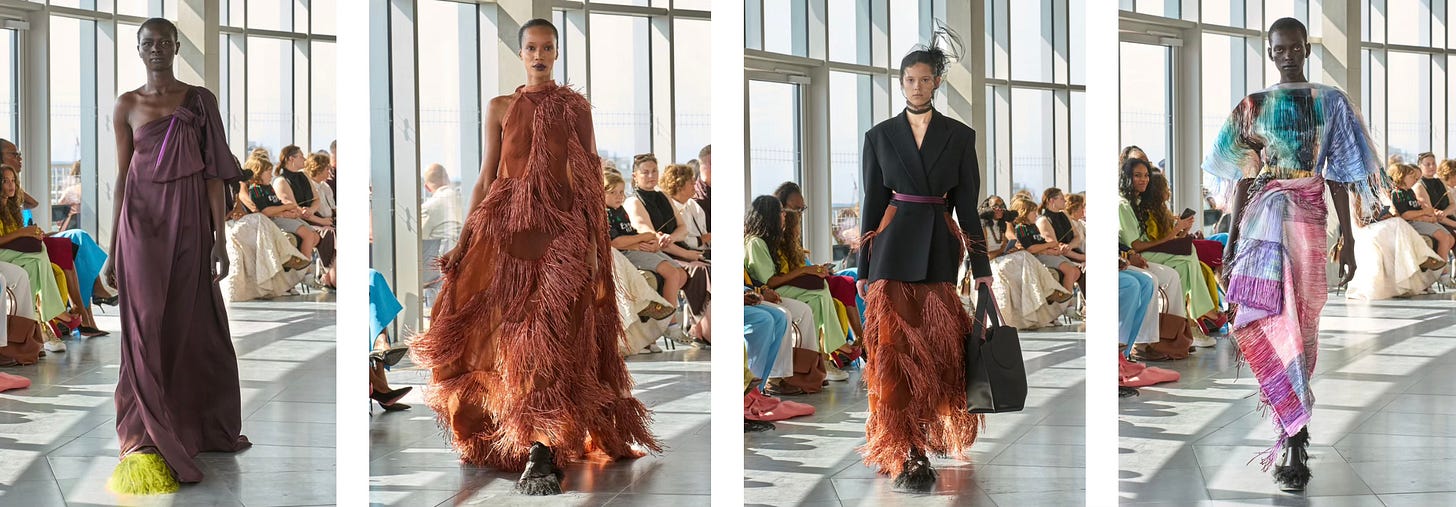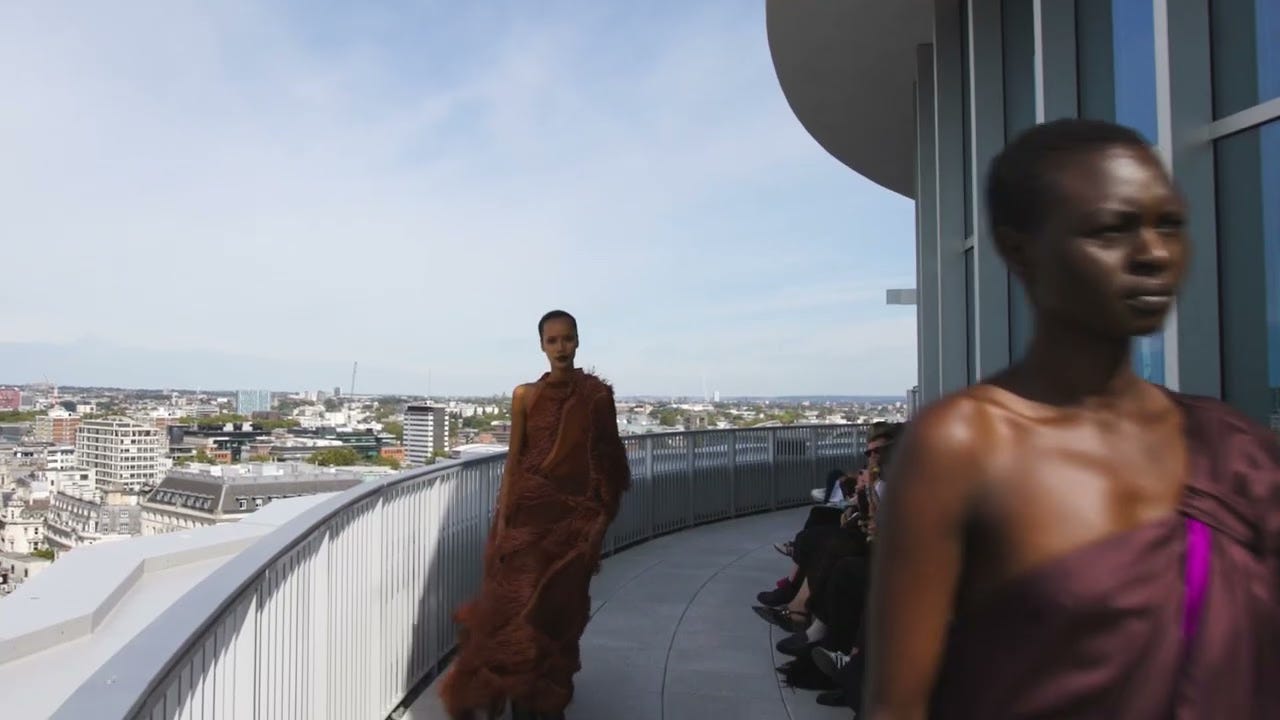Roksanda Ilincic pays homage to her Serbian roots with her Spring/Summer 2025 Collection at London Fashion Week
Through statement shoes and statement dresses, Roksanda transports Belgrade to the runway at Covent Garden’s Space House
Serbian-born Roksanda Ilincic honours her cultural ancestry by creating the Spring/Summer 2025 Collection, taking inspiration from Agnes Denes, Hungarian conceptual artist.
“I had rebelled against anything feminine when I was back home – all the classic elements that I appreciate now”, said Roksanda in an interview with Business of Fashion. Not only does the clothing that she designs represent women, but so does the background and history of her works. Roksanda is known for taking inspiration from female artists, mostly ones that are not necessarily too universally known. For her SS25 Collection, she chose the mastermind behind “Wheatfield - A Confrontation”, Agnes Denes.
In 1982, Denes planted a wheatfield in New York next to the World Trade Centre and the Financial District, almost “confronting” the Statue of Liberty. “Agnes was saying back then for us to slow down and understand what the real priorities in life should be, and to find the right balance of co-existing with nature”, said Ilincic. The designer further explained in an interview with Vogue, how this is so applicable to today’s society as well, because “we’re getting more and more removed from our own human values, ecology, the planet”.
None of these details are exaggerated within the collection, as Roksanda seamlessly leaves pieces of a puzzle throughout her designs, letting the audience pick them up, to then create the final picture out of it.
Even though Roksanda experiments with the various use of textiles and extreme designs, the whole of the collection is still simple, in a sense that the clothes are every-day pieces, only elevated versions of them.
“My clothes are about the fit and feeling comfortable. Even when they are experimental, they are very wearable”, said Roksanda. But this is what makes them stand out of the crowd.
This vision is clearly seen in Roksanda’s collection, as if the sharp shapes of the clothes were designed by an architect. Though most of the colours Roksanda uses are neutrals, she also added pops of colour into the collection, showcasing her experimentation with a more vibrant colour palette.
The amalgamation of nature and fashion is showcased so subtly yet sensibly in Roksanda’s SS25 collection, that the audience experiences a modern tale told in front of them, but instead of words, telling it through clothes.
The clever usage of materials mimics the texture of wheat, showcasing it through tinsel dresses, paw-like shoes and elements of raffia and feather.
Further mobilizing nature’s toolbar for inspiration, the Danube and Sava rivers also appear in the dresses as blurred out prints with earthy colours, and the usage of viscose additionally creates a dimensional effect. As another extension, Serbian landscapes are also hidden in a few of the dresses, bringing them to life with the playfulness of different fabrics.
By merging the elements of colour application, shaping and contrasting materials, Roksanda builds a bridge between the history of culture, and her present collection, letting the audience translate her story.
Every single detail from the show adds another piece to the puzzle; the fashion show’s venue is another hint; the brutalist Space House shows the outline of corporate London from above, just like the view of Manhattan from the wheat field, incorporating another nod to Denes’s work.
This was an additional touch of representation for her home country, as the overview of Belgrade and the glimpse of wheatfields are a core part of her Serbian background. “In Eastern Europe, the wheatfield is really embodied in the culture. We grew up with songs about harvesting the wheat; it’s part of our iconography as a country”, explained Roksanda.
Nearing the end of the show, the pieces of Roksanda’s story are beautifully interlocking, creating a concise overall view of the collection, causing a sort of catharsis; the collection is cemented. The dresses, the venue, the history, the environmental and societal message now produce a clear picture; “It’s not just about the clothes, it’s about culture”, said Roksanda in her interview with British Vogue.
Though being in central London, the audience could clearly see Roksanda’s perception and memories of her Serbian culture in front of them.





